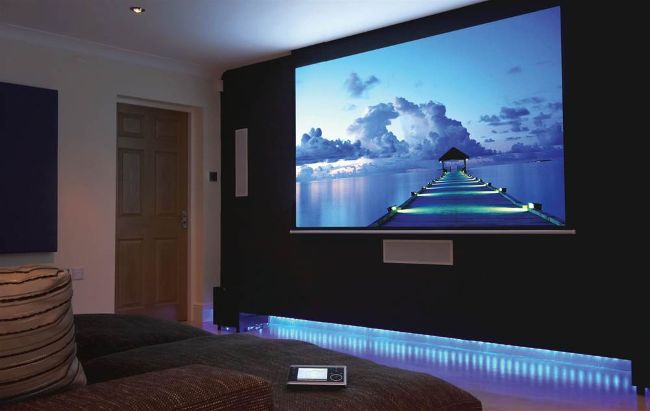MAXIMUM THEATER!
Power up your enter tainment with the full home cinema experience

A high-end home theater installation, but even a modest setup can achieve impressive results.
THE MOVIE THEATER is dead, long live the movie theater! Cultural shifts usually happen pretty slowly, but recent concern about being in enclosed spaces during a pandemic has certainly accelerated the shift towards home streaming.
Home theater installations have always been something enthusiastic PC users would try to tackle—expensive kit, miles of cables, drilling holes through drywall—these are all activities we imagine tick the average reader’s boxes.
A home theater project is about bringing together a host of disparate parts and technologies to offer that special movie experience. Of course, you could stream the same content to your cell phone, but where’s the fun in that?
No, this project will be about recreating the comfort, the lighting, the big-screen, and big surround-sound experience of the movie theater. Part of that is about measuring up and planning what size of screen your room can accommodate, working out how to route cables and power, then the sort of digital infrastructure you will need to deliver this conveniently and seamlessly.
No one wants a PC buzzing away in the corner of their lounge, nor do they want bundles of cables trailed around the room. So let’s dare to dream about the ideal home theater, explore what you’ll need, what the potential issues are, and how to plan and tackle creating a Maximum PC installation.
NEIL MOHR
SO, YOU’RE THINKING about setting up a home theater system? There are a whole lot of elements that go into making it. The obvious place to start might be the screen, but there’s also seating, lighting, and decor to consider—not forgetting a projector, speakers, and behind-thescenes cabling for the audio, networking, video, power, amplifiers, and digital storage. There are plenty more devices you need too, never mind connecting, configuring, and calibrating it all.
Here at Maximum PC magazine, we’re not experts on home renovation (for tips on those, check out our sister publications, Homebuilding & Renovating or Ideal Home) so we’ll leave the soft furnishing and decor decisions up to you. However, we will cover how planning and routing cabling should be part of any home renovation. This gives you the chance to properly chase, route, or hide necessary cables away and to do so in a futureproof way—you don’t want to be ripping out redundant cables in 12 months’ time.
That said, we will focus on the three core areas of video, audio, and infrastructure, i.e. the hardware, networking, and power. With video, we’ll concentrate on issues surrounding projectors, though this is generally the most straightforward area. Projectors are somewhat impractical in their own way, so we’ll cover big TV options. Ignoring the snobbery around audio, correctly setting up a theaterlevel surround system can be tricky, but modern theater amplifiers cut out much of this nonsense with automated calibration systems. While infrastructure is built around whatever playback device you choose and how it will be hooked into your wider home, this can be as simple or complex as you like.